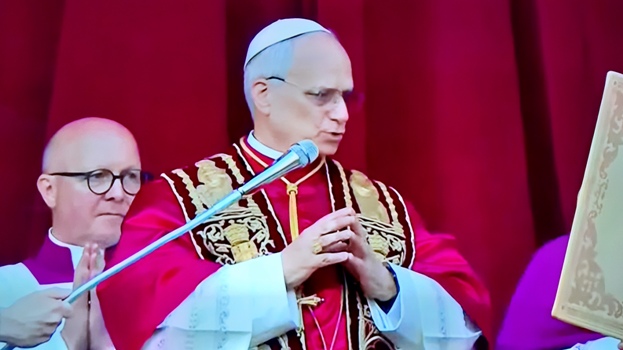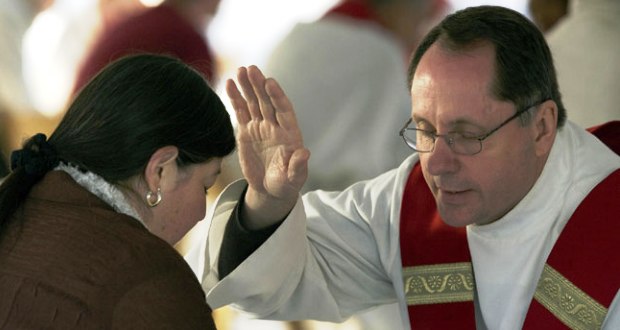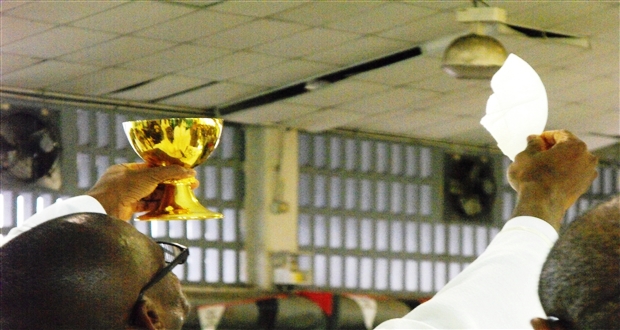Why the Catholic Church Has a Pope: Understanding the Leadership of the Church

A Scriptural and Historical Case for the Leadership of the Catholic Church
To many outside the Catholic Church, the idea of a Pope—a man in white robes claiming spiritual authority over more than a billion people—can seem strange, even presumptuous. Why does the Catholic Church place such importance on this one man? Isn’t Jesus Christ the true head of the Church?
Yes, Jesus is the head of the Church. But Jesus also established a visible, earthly leadership structure, beginning with the Apostle Peter. And from the earliest days of the Church, leadership has been passed down in what Catholics call apostolic succession.
Let’s look at how this began—and why it matters.
1. Jesus Establishes His Church—With a Visible Head
In Matthew 16:18-19, Jesus does something extraordinary:
“And I tell you that you are Peter, and on this rock I will build my Church, and the gates of hell shall not prevail against it. I will give you the keys of the kingdom of heaven; whatever you bind on earth will be bound in heaven…”
Here, Jesus:
- Changes Simon’s name to Peter (Greek: Petros, meaning “rock”),
- Declares Peter the foundation of His Church,
- Gives him the keys—a symbol of authority (see Isaiah 22:22),
- Gives him the power to bind and loose, a rabbinic term for authoritative teaching and judgment.
This isn’t a symbolic gesture. Jesus is giving real, spiritual authority to Peter. He is establishing visible leadership for His Church.
2. Peter Acts as the Leader of the Apostles
Throughout the Gospels and Acts of the Apostles, Peter takes a leading role:
- He is always listed first among the apostles (Matthew 10:2),
- He speaks on behalf of the Twelve (Matthew 16:16; John 6:68),
- Jesus specifically tells him to “strengthen your brothers” (Luke 22:32),
- Jesus says, “Feed my sheep” (John 21:15–17), entrusting him with pastoral care of the whole flock.
In Acts 1, Peter leads the apostles in replacing Judas. In Acts 2, he preaches the first public homily at Pentecost, leading to the conversion of 3,000 souls. In Acts 15, at the Council of Jerusalem, Peter settles the debate on Gentile conversion.
Peter isn’t acting on his own. He’s leading with authority and in unity—the visible head of a visible body.
3. Leadership Passed On: Apostolic Succession
As the Church grew, it became clear that this leadership could not die with the apostles. Paul writes to Timothy and Titus, laying hands on them (2 Timothy 1:6) and urging them to appoint faithful men to continue teaching (2 Timothy 2:2).
The early Church ordained bishops, who were successors to the apostles, to shepherd the faithful and preserve the unity and doctrine of the Church.
This is confirmed not only in Scripture but also in early Christian writings:
St. Irenaeus (c. 180 AD): “It is a matter of necessity that every Church should agree with this Church [Rome]… in which Peter established the Apostolic See.”
The bishop of Rome, who succeeded Peter, was recognized as the chief shepherd—not to dominate, but to preserve unity and fidelity to the teachings of Christ.
4. Why Is the Papacy Important?
The Pope is:
- A visible sign of unity among the world’s Catholics,
- A guardian of apostolic faith, preserving Scripture and Sacred Tradition,
- A servant of servants, called to lead not with domination, but with love and truth.
The papacy has had both saints and sinners—but the office itself remains a divinely instituted safeguard for the Church’s mission. As Jesus promised:
“The gates of hell shall not prevail against it.” (Matthew 16:18)
Even in human weakness, Christ’s promise holds.
5. What About Jesus as the Only Head?
Absolutely—Jesus is the invisible, eternal head of the Church (Colossians 1:18). But just as God appointed Moses to lead Israel, and gave the apostles authority, He also works through human instruments.
The Pope is not a replacement for Christ, but His vicar—a steward of Christ’s household (Luke 12:42-44), ensuring His teachings are passed on faithfully.
Final Thought for Our Non-Catholic Friends
You don’t have to agree with everything the Catholic Church teaches to appreciate the beauty and logic of apostolic succession. From Peter to Pope Francis, the Church has maintained an unbroken line of leadership, rooted in Scripture, guided by the Holy Spirit, and passed on through the laying on of hands.
The papacy is not about power—it’s about continuity, service, and fidelity to Christ’s mission.






